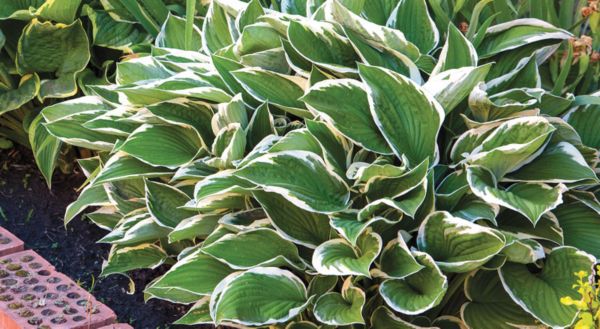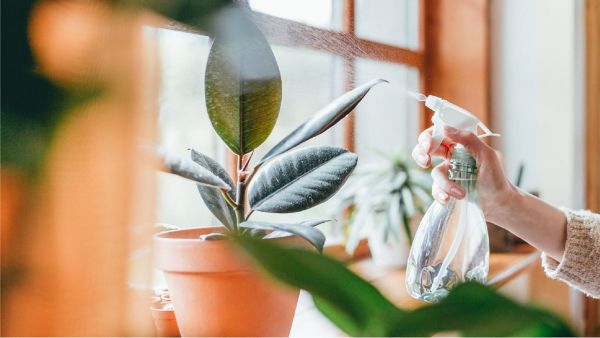How to Grow Aloe Vera
Authored by Leah Chester-Davis
This is a great plant for beginners and seasoned gardeners alike, and for folks who enjoy plants but have limited time. Aloe vera typically is available at garden centers, nurseries, and local garden club plant sales. It is an easy plant to propagate as it typically grows offshoots that can be removed from the parent plant and planted in a suitable potting mix.
Aloe vera is a succulent that has long, thick, upright, fleshy leaves that fan out from a center or basal point. There are many Aloe species and their forms vary but aloe vera is one of the most popular. It is easy to grow and will thrive many years indoors with little care or maintenance as long as it is in a bright location near a window. In warmer zones of the country (10 and 11), it can be grown outside year-round.
Sometimes called the “medicine plant,” aloe often is given a sunny spot in a kitchen window. The gel from its leaves is known for its soothing properties and is used to treat burns, sunburn, minor scrapes, cuts, and insect bites. Aloe vera has a long history as a medicinal plant and it has been used by many cultures for thousands of years. Aloe extracts are also used in cosmetics, pharmaceuticals, and ointments. Clinical research shows that it may help improve acne and psoriasis. It contains substances that are anti-inflammatory and anti-bacterial.
Aloe, particularly those grown outdoors, will typically send up tall flower stems that bloom with yellow or a pinkish orange flower in the spring. Blooming may be less likely on indoor plants. The thick, upright leaves are green and have a slightly mottled appearance due to the light green and gray patches that dot the plant.
About aloe vera
| Botanical name: | Aloe vera |
| Common name: | Aloe or Aloe vera |
| Plant type: | Houseplant; perennial in Zone 10 or 11 |
| Size: | 8 to 16 inches tall and 2 feet wide |
| Sun exposure: | Sun or bright indirect light; bright locations inside |
| Soil type: | Sandy |
| Soil pH: | 6.0 to 7.0 |
| Hardiness zones: | 10 and 11; inside year-round |
| Average first frost: | Varies by region |
| Average last frost: | Varies by region |
| Container friendly: | Yes |
| Beginner friendly: | Yes |
Growing
Aloe is a succulent that originated in Africa. It is a tough plant and thrives in hot, dry conditions. It grows well in coarse potting mix such as a cactus or succulent mix, which typically contains sand and drains well.
This plant needs full sun to bright, indirect light. Inadequate light can result in a droopy plant. It also needs sun or bright indirect light to bloom. With enough bright light, it will send up tall flowering spikes that will exhibit colorful tubular blooms in clusters.
Aloe can be propagated by seed though that requires intense effort and a long time. Most people start with a plant from the garden center or from a “pup” or “baby” plant gifted from a friend’s plant.
Aloe, particularly those grown outdoors, will typically send up tall flower stems that bloom with yellow or a pinkish orange flower in the spring.
Planting
Unless you are in zone 10 or 11, where you can plant aloe vera outdoors in a sunny to bright location with a well-drained, sandy loam, plan on planting this succulent in a container that you can take outdoors when frost conditions have passed. It needs two to six hours of sunlight each day.
Make sure any container you choose has a hole in the bottom for good drainage. If you plan to move your plant outdoors in the spring, select a size container that is manageable. Aloe vera will remain small in a smaller container or grow to the size it is planted in. As your plant grows and as you repot, you may want to keep a smaller pot for your kitchen. Starting a baby plant in a smaller pot may be the right size for a windowsill.
On occasion, aloe will benefit from a refresh of the potting media. Simply add fresh potting mix to the container. To increase the size of the plant, increase the size of the container. Select a container that is no more than 2 to 4 inches larger than its current container. A potting mix with extra sand or perlite added is preferable or look for special blends for cactus plants or succulents.
Aloe vera does not like wet conditions or overwatering. Allow the soil to dry out between watering. When the top inch of soil is dry, give it a thorough watering, until water runs out the bottom of the container. Empty any water in the saucer under the potted plant rather than letting it stand in water.
The plant will likely need less water in the fall and winter, the dormant seasons. Reduce watering during these months and water so that the soil is barely moist. Water enough to keep the leaves from shriveling.
Place your plant in or near a sunny window. Turn or rotate on occasion so all sides of the plant are exposed to the brightest, indirect light.
When the danger of frost has passed in the spring, you can move your plant outdoors. The transition from indoors to outside can be harsh for plants so place it in the shade for a few days so it can become acclimated to the brighter outdoor light. In high humidity and high-temperature regions, such as the Southeast, outdoors can sometimes be a challenge. Bring your plant back inside before the first fall frost. It will need to be placed in a warm room.
Aloe vera often produces offsets around its base. These are sometimes referred to as pups. They can be removed from the plant to start a new plant. Arizona Extension recommends removing them when they are a couple inches tall. If needed, use a clean, sharp knife to cut the offset away from the mother plant. Allow the wounded area to dry and scab over for a week before replanting in potting mix. This helps prevent disease organisms from entering the young plant through the wounds. The young plant will develop roots after about a month.
As your plant grows and as you repot, you may want to keep a smaller pot for your kitchen. Starting a baby plant in a smaller pot may be the right size for a windowsill.
Fertilizing
Aloe vera can handle poor soils quite well. Arizona Extension recommends fertilizing in the spring with a light application of indoor plant fertilizer. Follow label directions.
Controlling Pests, Diseases, and Other Problems
Insects, pests, and diseases are typically not a problem with this plant. Texas AgriLife Extension shares a brief list of potential pest or disease problems. Among those that might occur is soft rot, which is not common, but when it does appear, leaves collapse, and decay appears in the crown. Make sure the plant is in well-drained soil that dries out between watering.
- Leaf spots and tip dieback are problems that can occur but are not common. With the former, leaves can become spotted. With tip dieback, the tips of the leaves will have what look like water-soaked spots that will dry and shrivel. Poor growing conditions, particularly waterlogged soil, can be the culprits. Make sure you have well-drained soil, bright light, either with direct or indirect sunlight, and low humidity.
- Slime mold, which has the appearance of 1-inch diameter, white globular bodies with a black powdery interior will sometimes attach to the lower portion of leaves. It is a type of fungus and does not warrant any type of control measure.
- Sometimes mites can bother the plant. When purchasing a plant, inspect it to make sure there are no disease or pest problems. Mites can cause malformations in the plants. Remove infected plants and discard.
Harvesting and Storing
When the soothing gel is needed, simply cut a larger leaf from the plant, then cut lengthwise to extract the jelly-like substance and apply it directly to burns, cuts, or bites.
Storing
It is best to cut a leaf as needed for topical use rather than trying to extract the sap or slimy juice to store, which can be challenging.
Cut lengthwise to extract the jelly-like substance and apply it directly to burns, cuts or bites.
Expert Tips
- While the substance extracted from aloe vera is used in numerous pharmaceuticals and cosmetics, and even in some drinks after certain substances are removed, it can be poisonous if ingested. It can cause major discomfort and cramps. Also, some people with sensitive skin may be allergic to the sap or juice which may cause skin irritation or dermatitis. When using topically, test on a small area first.
- Keep the plant away from pets and young children to reduce chances of ingestion.
- Do not fuss with this plant and do not overwater! This plant likes dry conditions and it must have well-drained soil.
- If you are in a cold climate where temperatures drop quite low and you have drafty windows, you may want to ensure your plant is in a spot that stays warm, above 50 degrees.
Frequently asked questions
Is aloe vera poisonous to pets?
According to the American Society for the Prevention of Cruelty to Animals (ASPCA), aloe vera is toxic to dogs, cats and horses.
Why doesn’t my aloe vera bloom?
It is not uncommon for an aloe vera that is a houseplant to not bloom. In fact, aloe vera grown indoors rarely does bloom but with plenty of bright light there is always hope.
Is aloe vera a good plant for a drought garden?
Aloe vera loves hot, dry conditions. If you are in warmer plant hardiness zones, such as 10 and 11, you typically may grow this plant year-round outdoors. However, if you are in a zone where temperatures dip to frost conditions or lower, you will need to move this plant to a bright indoor location before frost.





